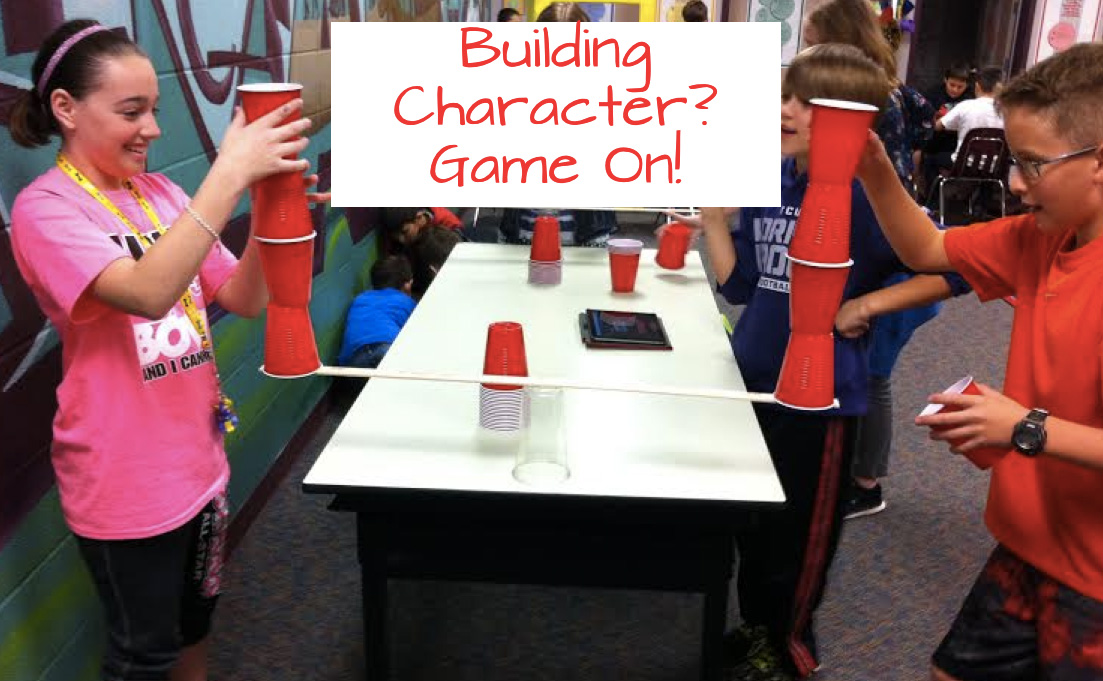In my two and a half decades as a school counselor, caregivers and parents repeatedly asked me if I could give their
child some self-esteem, as if it were something that we could package up and hand to them with a beautiful bow on
top. And while I couldn’t technically give them their self-esteem, I could help them develop it through talking,
through service, and through play.
Here are six of the games that we used to nurture self-esteem while building character.
Chutes and Ladders
This seems really basic and simple, but talking with children about moving up the ladder as a result of a good choice and sliding down a chute after a bad choice really served as a beautiful metaphor for the way things go in life. Self-esteem comes from the confidence of knowing when you’re doing something right; simply put, it feels good to get good at doing good. If you’re working with young children, get out Chutes and Ladders and try it today. As you’re playing, make sure to emphasize that in the game, it’s a spinner or dice that determine where you land, but in life when it’s for real, it will be good choices that take you up the ladder.
Playing Cards
Grab a deck of playing cards and start small with a game of Hearts, Crazy 8s, Uno, or War. This will be your opportunity to teach the child in your care not only how to strategize, but how to win, and how to lose. Confidence comes as children practice and sharpen their skills at something. Don’t fall prey to letting children win just so they don’t have to experience losing. Instead, coach them as they’re playing so that they learn how to navigate the ins and outs of the card games they’ll learn to love. Focus on their strengths; their self-esteem will increase as they learn to win and lose with dignity and grace.
Triangle Tag
This game of tag requires a group of four, so invite your child to grab three friends and give it a go. Three kids hold hands to make a triangle; designate one of them as the Captain. The fourth person is “it” and will try to tag the Captain by going around the circle, not under or through. The other two friends serve as body guards, to keep the Captain safe and keep the tagger away. Time the game for ten seconds at first, then add time. If the Captain gets tagged, then switch places so everyone gets a chance to play all three roles. After playing this one, unpack it by asking questions like: What was it like to be the Captain? Why was it challenging to be the body guards? What was it like to be the outsider (tagger) trying to get in? Then work with them to make a parallel to their real-life friendships and relationships.
The Enemy and the Protector
You’ll need a group of a dozen kids or so for this one. Instruct each person to secretly choose one person in the group to be their protector and another to represent their enemy. When the game starts, the goal is to keep your protector between yourself and your enemy. As you might imagine, this can get pretty chaotic pretty quickly because every move someone makes generates another move. Play it for a while before stopping to debrief the metaphor that this creates for the stakeholders in our lives. A stakeholder is anyone who has a stake in our decisions, anyone who’s going to be involved, who’s going to care. Who are they? And how do their moves in life change yours? How do your moves change them? Stretch it a bit further and find out what might act as an “enemy” in life; expect answers like drugs, violence, bullies. What things or which people act as protectors for them?
Goal Posts
This game requires some large plastic tumblers and a yard stick, balanced on an upside down tumbler; participants pair up and attempt to stack the most cups onto the yard stick. The two-member team races against the clock (and other teams) to make the tallest goal post. This balancing act takes teamwork and requires precision as the friends collaborate to stack the cups with coordination, caution, and care at just the right time, another poignant parallel for being in sync with teammates, classmates or family members in projects and in life. What happens when the cups collapse in this game? How about in life? How do we fail forward? What might happen if our emotions got in the way? Use this and other Minute-To-Win It games to build self-esteem by working together to find a formula for team-building success.
Jenga
Buy this block-stacking game new or find it at a garage sale; it only requires the 54 blocks and steady hands as participants take turns taking a block from the tower and placing it on top. How tall the tower gets before it falls depends on how unstable the structure becomes as the blocks are removed from the base. Use life-sized Jenga blocks for a more interactive spin on this timeless game. Affix stickers with getting-to-know-you questions to add an element of connecting and conversing. Use the tower as a metaphor for life: Sometimes things happen that might pull a block from our foundation (tower), a trauma like a car accident, family changes like a divorce, maybe even the death of a pet or a relative. Who will be there when life becomes unstable like the Jenga tower and you need a little extra support? What are your strategies for resilience, to help you get back up when things seem to be crumbling down around you? Identifying these people and things before we need them will help to put them at our fingertips when we do.

